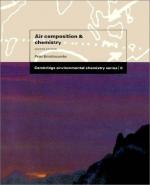|
This section contains 839 words (approx. 3 pages at 300 words per page) |

|
During most of history, Earth's atmosphere was regarded as little more than a mass of air and clouds. Simple observations from the ground yielded little more than a basic understanding of the atmosphere's characteristics.
Manned balloon ascents in the late 1700s and early 1800s were restricted to about 5 miles (8 km), the limit of life-supporting oxygen. There were also risks to human life. From a practical standpoint, it was difficult to make widespread observations over space and time.
Breakthroughs in atmospheric research came as new inventions made it possible to obtain information from unmanned balloon flights. The first of these was the theodolite, a viewing instrument used to survey distances and angles, invented by Gustave Hermite in 1896. This device increased the range to which a ground observer could follow a balloon's ascent pattern. The information-gathering packages delivered to the atmosphere by balloons became...
|
This section contains 839 words (approx. 3 pages at 300 words per page) |

|


